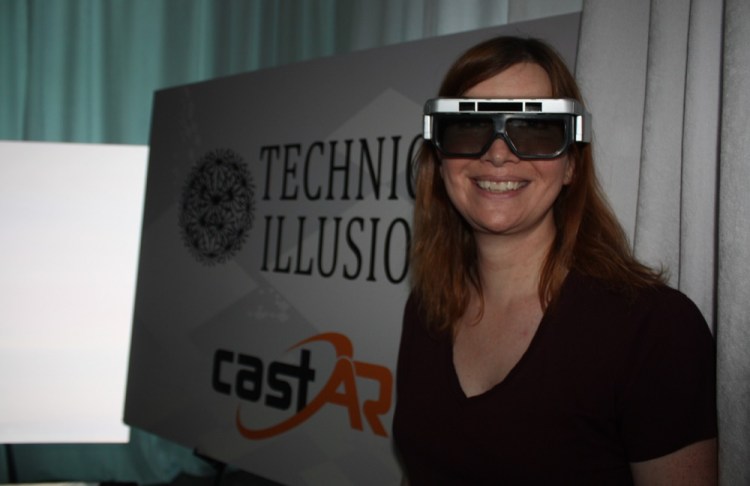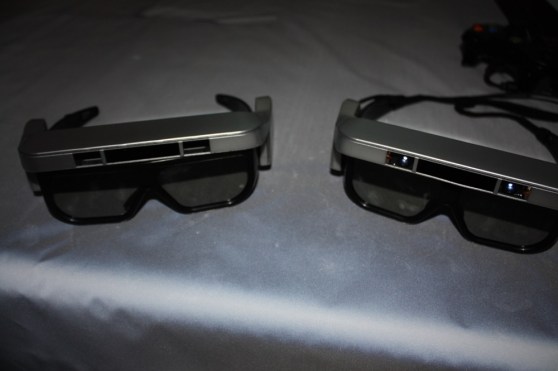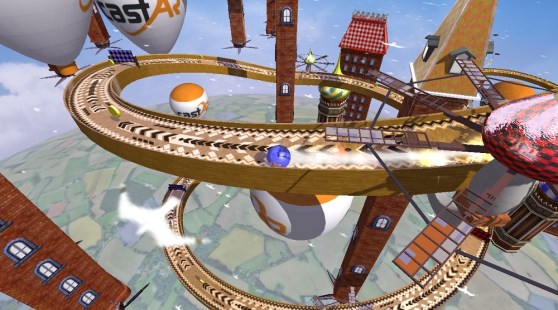GamesBeat: So that’s closer to UltraHD along one dimension.
Ellsworth: It’s tricky, because we’re talking about stereoscopic vision. It’s per eye, so some of those pixels overlap. How do you rank those? How do they really contribute? But in the projector we have 100 percent fill factor. In other head-mount displays, it looks like you’re looking through a screen door or something like that. There’s a bunch of little dots. Our red, green, and blue pixels are all on top of each other. You don’t get that separation. You can read text. It has very little distortion.
GamesBeat: What do you think about the progress of the AR space and VR space over the past year?
Ellsworth: It’s fantastic. The VR space is exploding. I haven’t seen as much in the AR space, as far as serious development. It’s a lot more difficult to do AR than VR, because when you’re completely blocked off from the world, you don’t have any point of reference. If a pixel isn’t in the right place you don’t notice. But in augmented reality, you have to get every pixel in the right spot. That’s what we’re working on.
GamesBeat: What applications seem like they’ll be the first ways people use this?
Ellsworth: Games are going to be king for a while. The things I’m personally excited about are flight simulators, where you have the reflective material on a wall and you can turn your head side to side. Or very immersive first-person shooters, using it as a giant screen. A little semicircle would be ideal as a racing or flight simulator. Looking to one side, you’d be looking out the window.
A lot of people are going to get excited about tabletop collaborative experiences, where multiple people sit around a table and work in the same physical space. All the game characters are in the same space. We have a lot of companies approaching us that want to use it for visualization – architecture, things like that, where you can sit around and table and work in the same space.
GamesBeat: And y’all are moving to Mountain View?
Ellsworth: Yeah! I’m excited to get down there and be right in the middle of Nerdvana. The talent down there in particular — it’s difficult up in Seattle. There’s a lot of software, but not as much hardware.
GamesBeat: A lot of companies seem to be here, a lot of projects going on. Do you need more specialized people in some way?
Ellsworth: We struggled this year. It would have been much easier to get a hired gun in Mountain View. Investment is a factor as well. We were just setting up our offices in Mountain View and we’re always seeing Google’s self-driving cars go by. It’s kind of funny.
GamesBeat: I thought Google owned all the real estate in town by now.
Ellsworth: They might. One of the startups I used to work at, I drove by there in a nostalgic mood. It’d been completely gutted and Google-fied. It made me a little sad, but happy too. Google does a lot of good stuff.
GamesBeat: How many people do you have now?
Ellsworth: We’re 10 or 11. I lose track a bit. We brought on a new CEO. We need more electrical engineers and algorithm folks and games people. This next year is going to be all about developer outreach, so we’re going to have to bring on folks to work with developers and get their game content working in an AR environment.
GamesBeat: What are you seeing in the maker movement? All these people who have followed you, are they itching to develop things?
Ellsworth: People are really eager. We’re maybe three or four months behind in getting these early developer glasses out. Every day we hear from them — “We want it! We can develop games once we’ve got it!” We’re excited to finally ship them.
In the next year or so, as I say, we’ll be doing developer relations. We’ll spend a lot of time working with developers to integrate their content. In a parallel effort, our wand is ready to go. We’re going to debug it and send it out. Then our RFID grid. Our optics partners are working on the VR clips. All that stuff’s happening in parallel. The glasses themselves will go through a shrink, just to make them lighter and more robust. We’ll learn a lot from these first glasses and fix them up and go again.
VentureBeat's mission is to be a digital town square for technical decision-makers to gain knowledge about transformative enterprise technology and transact. Learn More



